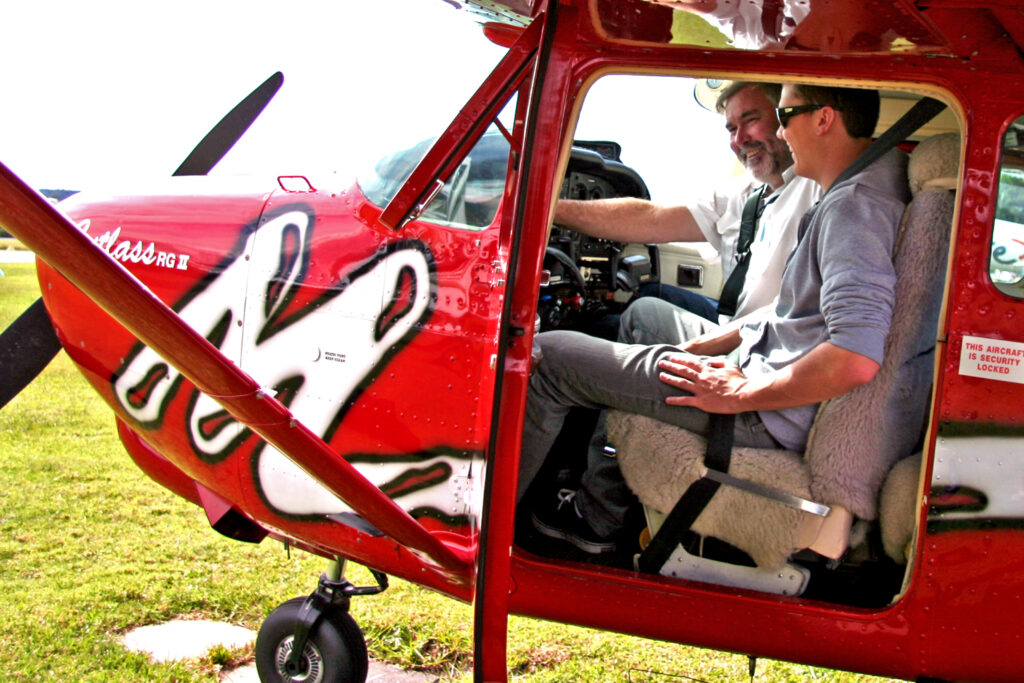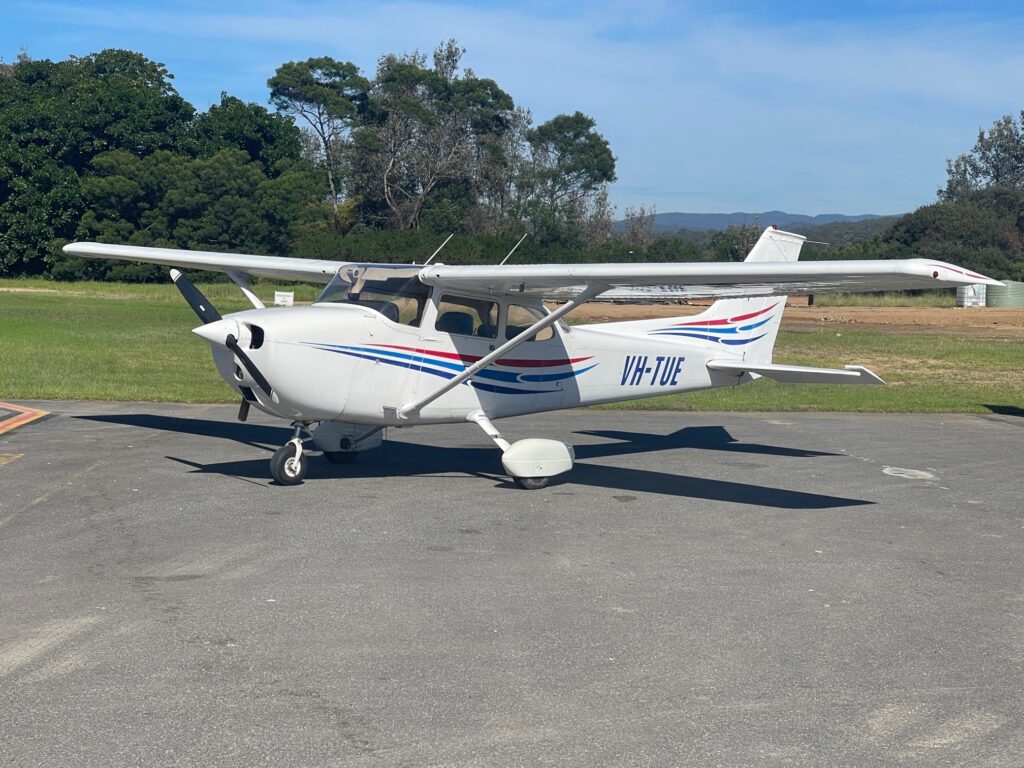


WELCOME to the world of Aviation. Lao Tzu, the famous oriental philosopher once said… “a journey of a thousand miles begins with a single step”. Congratulations on planning your first step towards the exciting journey of becoming a pilot!
The first step
Involves a hands-on Trial Instructional flight (TIF). You will actually take control of the aeroplane under the supervision of a qualified flight instructor. This flight is usually around 30-40 minutes and can be logged towards the hours you need to obtain a licence. Here’s what you can expect from a TIF:
The “Trial Instructional Flight” (TIF)
A TIF is a fully hands on piloting experience where you get to do most of the flying except for the take-off and landing.
There is no obligation to continue with training after the flight, although a large
percentage of people do. If you do decide to continue with training, then the TIF flight time can be logged and go toward future license hour requirements.
The cost for a TIF is $300. This includes the pre and post flight briefing with the
instructor as well as the flight. Please allow one and a half hours out of your day for the flight and necessary briefings.
Click here to find out more info
The prerequisites
After your Trial Instructional flight (TIF), if you choose to continue your flying training, you will need to comply with a few basic requirements:
- You need to apply to the Aviation Regulator (CASA) for an Aviation Reference Number (ARN). There is no fee for this but you will require basic ID documents.
- You need to complete a medical check with a Doctor who specialises in Aviation Medicine who is approved by CASA. Find an Aviation Medical Examiner
- You need to apply for an Aviation Security Identification Card (ASIC). This can be done next door to our office with Aviation ID Australia once you have your ARN.
- You need to show you are proficient in the English language – you can be assessed for this here at the flight school with a person approved for the purpose.
The next step: choose which licence you wish to attain
After your TIF you will most likely want to sit down with an Instructor and discuss the Licence options. Some choose to get enough hours to fly for fun and go for a Recreational Pilot Licence (RPL), some choose to continue through to the Private Pilot Licence (PPL), others may aspire to a career in Aviation and aim for the Commercial Pilot Licence (CPL). The choice is entirely yours.
You might even prefer a “let‘s see how I go“ approach and log a few more hours before deciding. Whichever path you choose, and whichever qualification you aspire to, Merimbula Air Services can certainly help you reach you goals. The sky is the limit here in fact – literally!
The RPL (Recreational Pilot Licence)
The RPL allows you to carry passengers and to fly within 25 nautical miles of the airport. To obtain this licence you need to be at least 16 years of age, hold a current medical certificate and have a minimum of 25 hours logged with 5 of these hours being solo. The RPL can generally be achieved for around $10 to $12K based on competency and the regularity of your training. Merimbula Air Services operate on a pay as you go system, saving a huge upfront cost.
RPL (endorsements)
As a holder of an RPL you can build on your skills and abilities by electing to pursue further hours of training and be issued with various endorsements – for example a navigation endorsement will lift the 25 nm from the airport restriction.
The PPL (Private Pilot Licence)
The PPL licence is less restrictive than the RPL as it allows you to carry passengers and fly anywhere in Australia. The total minimum hours required to attain the PPL are 40hrs of which 10 are solo hours. The PPL can generally be achieved for around $ 15 to $17K, once again this is competency based.
The CPL (Commercial Pilot Licence)
The CPL license allows you to fly and be paid. We run a non-integrated Commercial Pilot Licence, requiring a minimum of 200 hours. Our instructors wish to pass on their commercial experience, using checklists from your 1st flight that are easily transferable to larger more complex aircraft as you progress. We don’t believe in burning up a lot of hours (and money) just to gain hours, rather we look to build a commercial plan with as much training as possible towards your chosen specific career path, within the mandated 200 hours. This may include an Instrument Rating and Multi Engine Class Rating for those looking at airlines, or a Tailwheel Endorsement and Low-Level Endorsement for those looking at Aerial Application. We have access to a variety aircraft and recommend you contact us to tailor a plan to suit your specific needs. Our joy comes in seeing you achieve!
Our Aircraft / Instructors
Here at Merimbula Air Services we have a variety of aircraft available. We predominately use a Cessna 172 for initial training. For those continuing past the RPL and doing the navigation exercises we make available our second Cessna 172 that has undergone an engine conversion and has some extra horsepower. We also have access to some higher performance aircraft, as well as those with specific design features.
We have three qualified and experienced flight Instructors. As a relatively small flight school we can ensure a very personalised approach to help you achieve your goals.
For those wanting to pursue a career in aviation we can upgrade you to more complex multi engine aircraft after your basic PPL training.
The Theory
We have designed a special online training portal within this website with access given to our students at no charge. It provides preflight briefings covering the basic principles of flight, which can be studied before your lesson to save cost, as well as many useful links and print outs like radio procedures, to make your training easier.
There will be various in–house written tests of your aviation knowledge stepped along the path to your licence, like the pre–solo test, a pre-area solo and the radio proficiency test. CASA also require an online exam testing knowledge, for which Merimbula Air Services is a certified testing facility. We have written practice exams to help you self-test your level of knowledge before sitting an exam.
Some of the more complex subjects you will need to study the in-depth principles and procedural requirements. This can be done either by self-study (textbooks required), by enrolling in a class or by organising some private tuition. Classes and tuition will involve extra costs. We are here to help guide and advise on which program of study works for you and we will certainly be available to answer any questions if you choose the self-study path.
How often should I plan to do my training flights?
Twice weekly is ideal to stay at the top of the learning curve. Once a week also works – as long as you do some “mental rehearsal” between flights. We do however understand that time, bad weather, and financial constraints often stretch out the time between training sessions. The general rule is the less time between training flights, especially in the first 15 hours, the more likely you are to obtain your licence in the minimum required hours and therefore the less it will cost you. Gaps of 3-4 weeks between training flights in the initial stages usually means more time spent on revision instead of stepping up to the next lesson on our curriculum.
Don‘t hesitate to Contact our Head of Operations (Tracy Bolt) should you have any further questions.
Aircraft Prices
As of 1 March 2024
- C172 VH-TUE (160hp) $405 / hr for RPL and PPL training
- C150 VH-TIW or VH-FYY (100hp) $365/hr for RPL and PPL training.
- PA 32R VH-HYM (300hp) $515 / hr for CPL and advanced training
- PN 68B VH-JQM (twin engine 400HP) $880/ hr
- Instructor only rate (your aircraft) $175 / hr
- Instructor theory assistance $95/ hr
